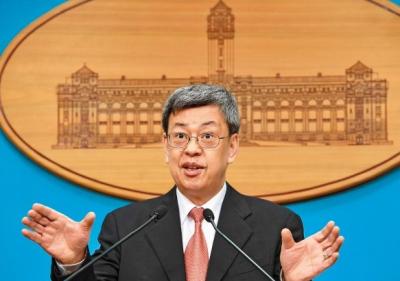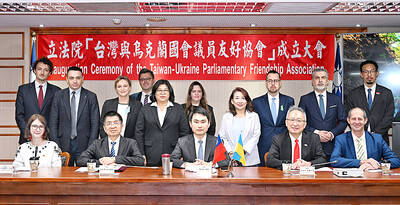Despite the decline in the number of Chinese tourists visiting Taiwan, the medical tourism industry has enjoyed steady growth, thanks to a change of emphasis to visitors from Europe, North America, Hong Kong and Macau.
Ministry of Health and Welfare statistics showed that about 69,000 medical visas were issued from January to August, down from the approximately 80,000 issued during the same period last year.
However, both the number of visitors coming for medical treatment or medical cosmetology and the output of the industry have been growing steadily.
From 2008 to last year, 63 medical institutions treating patients from abroad have seen the number of foreign patients rise from about 68,000 to about 300,000, ministry data showed.
The industry’s output has also increased from NT$2 billion (US$63.55 million at the current exchange rate) to about NT$15.9 billion over the same period, the data showed.
The industry has also seen significant growth in patients from Southeast Asia, whose numbers rose from 15 percent of medical tourism arrivals in 2008 to close to 22 percent last year, statistics showed.
A few medical tourism operators two years ago began to diversify their client base, anticipating a possible decline in Chinese tourist numbers.
The Taipei Wellness Clinic and Resort targets high-end customers from Southeast Asia, Hong Kong, Macau and US citizens of the Chinese descent.
Foreigners accounted for 11 percent of the clinic’s patients last year, including 9 percent from China, clinic vice president Tsai Tsai-wan (蔡才灣) said.
Foreigners have accounted for 19 percent of the clinic’s clientele this year, including 13 percent from China, he said.
The clinic’s revenue has risen this year as well, he said, adding that while it is important to keep Chinese, it is better not to put all your eggs in one basket.
Some medical tour operators said they have begun to tap different client sources, including tourists from the Southeast Asia, Hong Kong and Macau as well as independent tourists from China.
The decrease in Chinese tour group numbers has helped bring back Taiwanese and other local clients, as the large tour groups sometimes affected the quality of treatment other clients would receive, they said.

Taiwan would welcome the return of Honduras as a diplomatic ally if its next president decides to make such a move, Minister of Foreign Affairs Lin Chia-lung (林佳龍) said yesterday. “Of course, we would welcome Honduras if they want to restore diplomatic ties with Taiwan after their elections,” Lin said at a meeting of the legislature’s Foreign Affairs and National Defense Committee, when asked to comment on statements made by two of the three Honduran presidential candidates during the presidential campaign in the Central American country. Taiwan is paying close attention to the region as a whole in the wake of a

President William Lai (賴清德) has appointed former vice president Chen Chien-jen (陳建仁) to attend the late Pope Francis’ funeral at the Vatican City on Saturday on his behalf, the Ministry of Foreign Affairs said today. The Holy See announced Francis’ funeral would take place on Saturday at 10am in St Peter’s Square. The ministry expressed condolences over Francis’ passing and said that Chen would represent Taiwan at the funeral and offer condolences in person. Taiwan and the Vatican have a long-standing and close diplomatic relationship, the ministry said. Both sides agreed to have Chen represent Taiwan at the funeral, given his Catholic identity and

Chinese Nationalist Party (KMT) Chairman Eric Chu (朱立倫), spokeswoman Yang Chih-yu (楊智伃) and Legislator Hsieh Lung-chieh (謝龍介) would be summoned by police for questioning for leading an illegal assembly on Thursday evening last week, Minister of the Interior Liu Shyh-fang (劉世芳) said today. The three KMT officials led an assembly outside the Taipei City Prosecutors’ Office, a restricted area where public assembly is not allowed, protesting the questioning of several KMT staff and searches of KMT headquarters and offices in a recall petition forgery case. Chu, Yang and Hsieh are all suspected of contravening the Assembly and Parade Act (集會遊行法) by holding

Lawmakers from the Democratic Progressive Party (DPP) yesterday established a friendship group with their counterparts in Ukraine to promote parliamentary exchanges between the two countries. A ceremony in Taipei for the Taiwan-Ukraine Parliamentary Friendship Association, initiated by DPP Legislator Chen Kuan-ting (陳冠廷), was attended by lawmakers and officials, including Deputy Minister of Foreign Affairs Francois Wu (吳志中) and European Economic and Trade Office in Taiwan Director Lutz Gullner. The increasingly dire situation in Ukraine is a global concern, and Taiwan cannot turn its back when the latter is in need of help, as the two countries share many common values and interests,